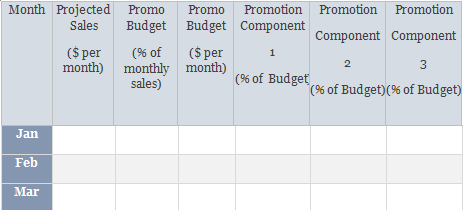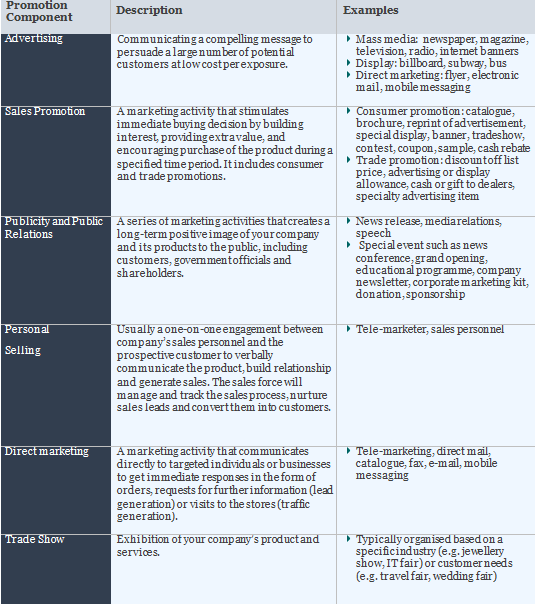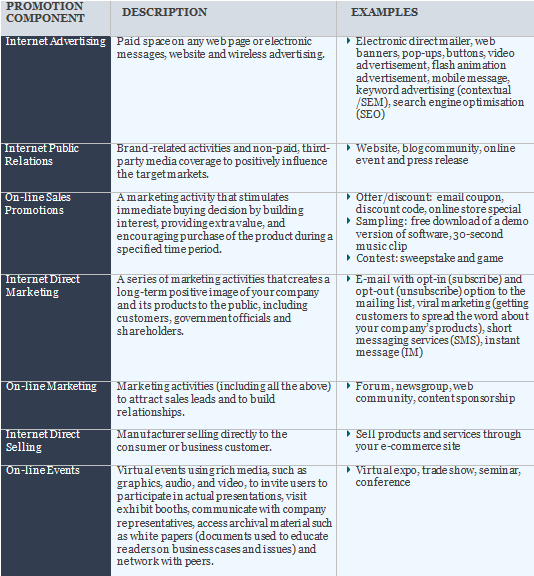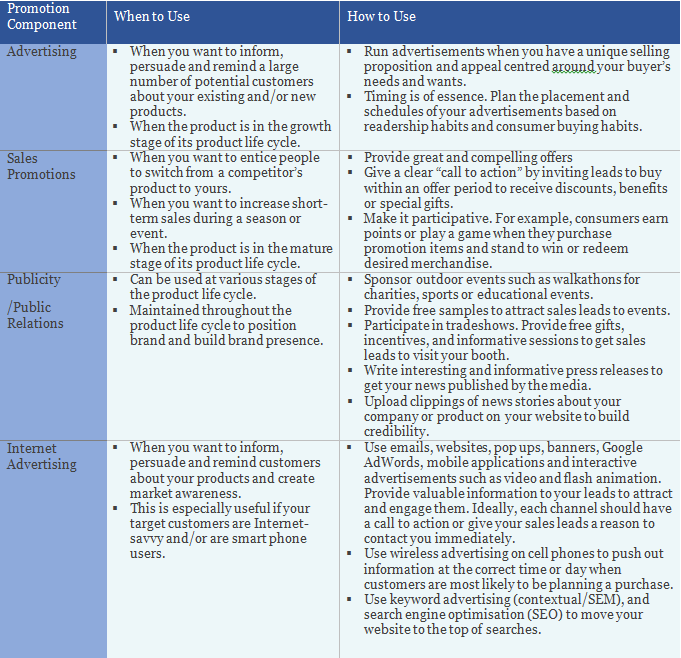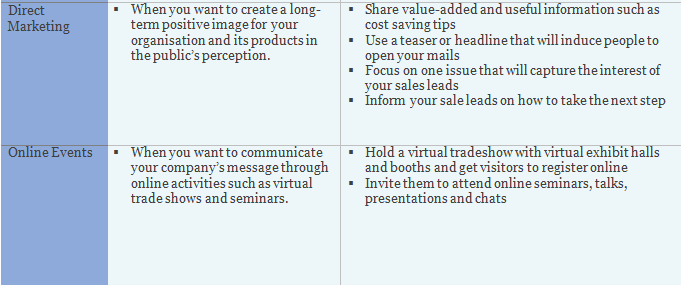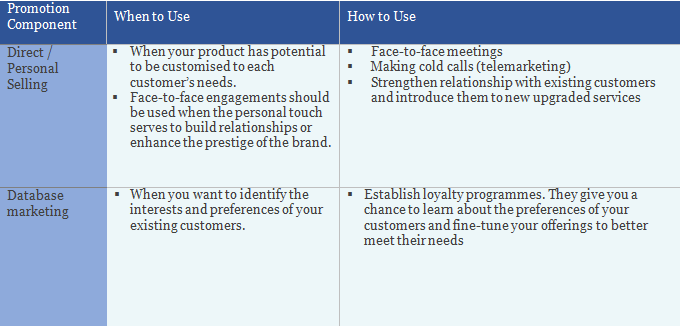How do I develop my promotion?
You need a promotion plan to develop, implement, control and evaluate your company’s marketing activities in an organised manner.
Step 1: Identify your prospective customers
When developing a promotion plan, identifying your prospective customers is the first and most significant step. Based on the profile of these customers, you will then be able to adjust your marketing mix (product, price, place and promotion) to reach out to them effectively. Read the Marketing Plan guide for more information.
There are various types of promotion components such as advertising, publicity, word of mouth and special events. Couple these with persuasion through personal selling, direct mail and telemarketing to attract sales leads.
Step 2: Decide your promotion budget
You will need to decide what to base your promotion budget on and when, where and how you should spend it. There is no one correct methodology to arrive at a magic number. For reference, the following are some methods commonly used by companies to decide on their promotion budget.
- Based on a percentage of projected sales revenue or profit
- Based on desired customer reach or sales growth, if you have well-defined customer and market information
- Benchmark against the budget of your direct competitors in the industry
- Based on objectives and tasks required.
- You can substitute time, effort and creativity for any lack in budget
Establish your promotion budget at the beginning of the year. Remember to keep your expenses within this budget when choosing the types of promotion and frequency of usage that can best reach your target customers. A sample of a promotion budget and its various components is shown below. Start planning your own budget.
Tip
Industry Ad-to-Sales ratios
This website provides an idea of the advertising ratios & budgets in various industries. As the figures include those of big companies, bear in mind the size of your company relative to theirs and adjust accordingly. While these are typical industry budgets, there is no need to benchmark against them as you can explore creative and lower cost means of getting your message to potential customers.
saibooks.com/advertising-sales-ratios/
Step 3: Select your promotion components
Select a mix of traditional or modern interactive promotion components based on the profile of your target customers and company resources.
It is also important that you take into consideration changing market conditions that could potentially impact the performance of your promotions. Decide on suitable strategies to address these issues.
Traditional
- Advertising
- Sales Promotions
- Publicity and Public Relations
- Personal Selling
- Direct Marketing
- Trade Show
Modern Interactive
- Internet Advertising
- Internet Public Relations
- On-line Sales Promotions
- Internet Direct Marketing
- On-line Marketing
- Internet Direct Selling
- Online Events
Tip
Promotional Mixes
Think about the best combination of promotion components possible. It should help you attract, engage and convert your prospective customers.
Different types of businesses will typically require different emphasis on the various components, for example:
| F&B retailer
|
Fashion retailer
|
Manufacturer
|
Traditional Promotion Components
Modern Interactive Promotion Component
Step 4: Understand the use of promotional components
Now that you have outlined your promotional plan, it is important for you to understand how you can use the various promotional components you have listed to generate sales leads and turn them into sales for your company.
The impact of your promotional plan on sales depends on how well you can increase sales leads by generating traffic to your company’s stores or website. It is important to execute the promotion activities scheduled in the promotional plan to get the leads to find you.
POINT TO NOTE #2
Since today’s sales leads are in the Internet generation, you can communicate your personalized messages to a specific sales lead (one-to-one), groups of sales leads or a massive number of sales leads (one-to-many) that are drawn to your website.
Now that you have outlined your promotion plan, you need to know how to use each promotion component to generate good leads and turn them into sales.
The impact of your promotion plan on sales depends on how effectively you use it to increase sales leads by generating traffic to your company’s stores or website.
The ideas given in this section serve to stimulate your planning. As soon as you get familiar with the basics, there are many other good ideas out in the real world that you can learn from and adapt creatively for your special purpose. Translate ideas into effective promotion to reach out to your particular segment of customers, whether they are consumers or businesses.
Tip
The Internet Era
Since many users today are familiar with the Internet, your website holds great potential for you to communicate with your customers. You can leverage on your website to better understand their needs and to strengthen your image as the preferred supplier.
You can send personalised messages to each specific sales lead (one-to-one), groups of sales leads or a massive number of sales leads (one-to-many).
Using Promotion Components to Generate Leads
